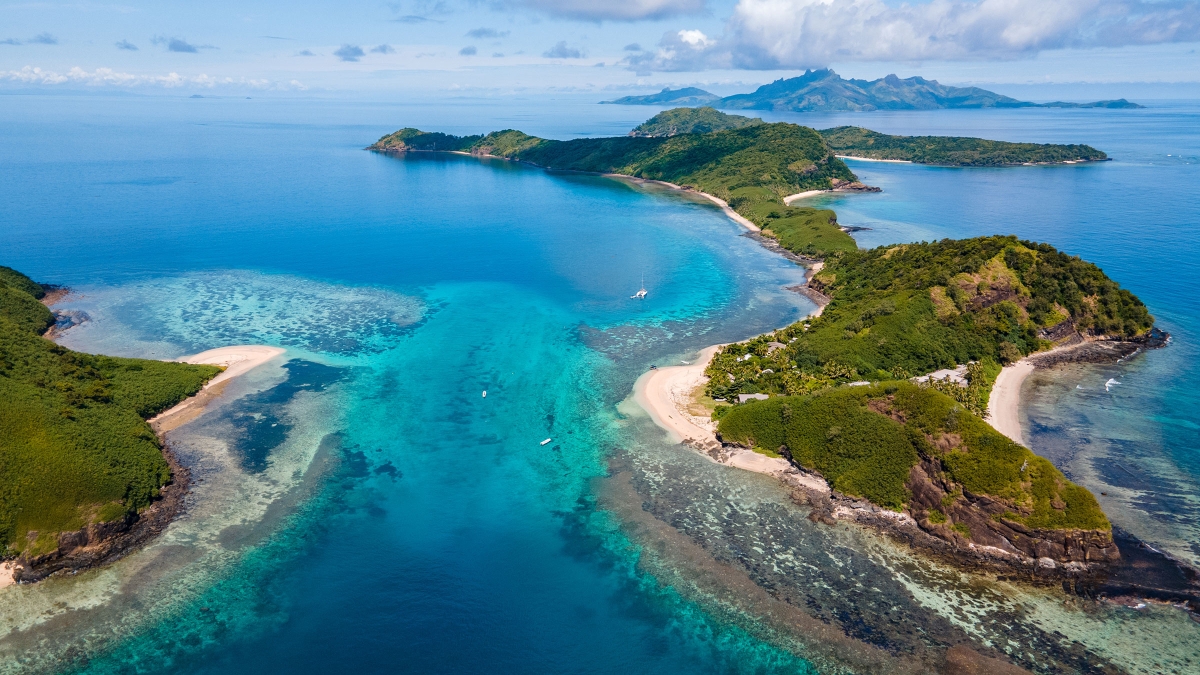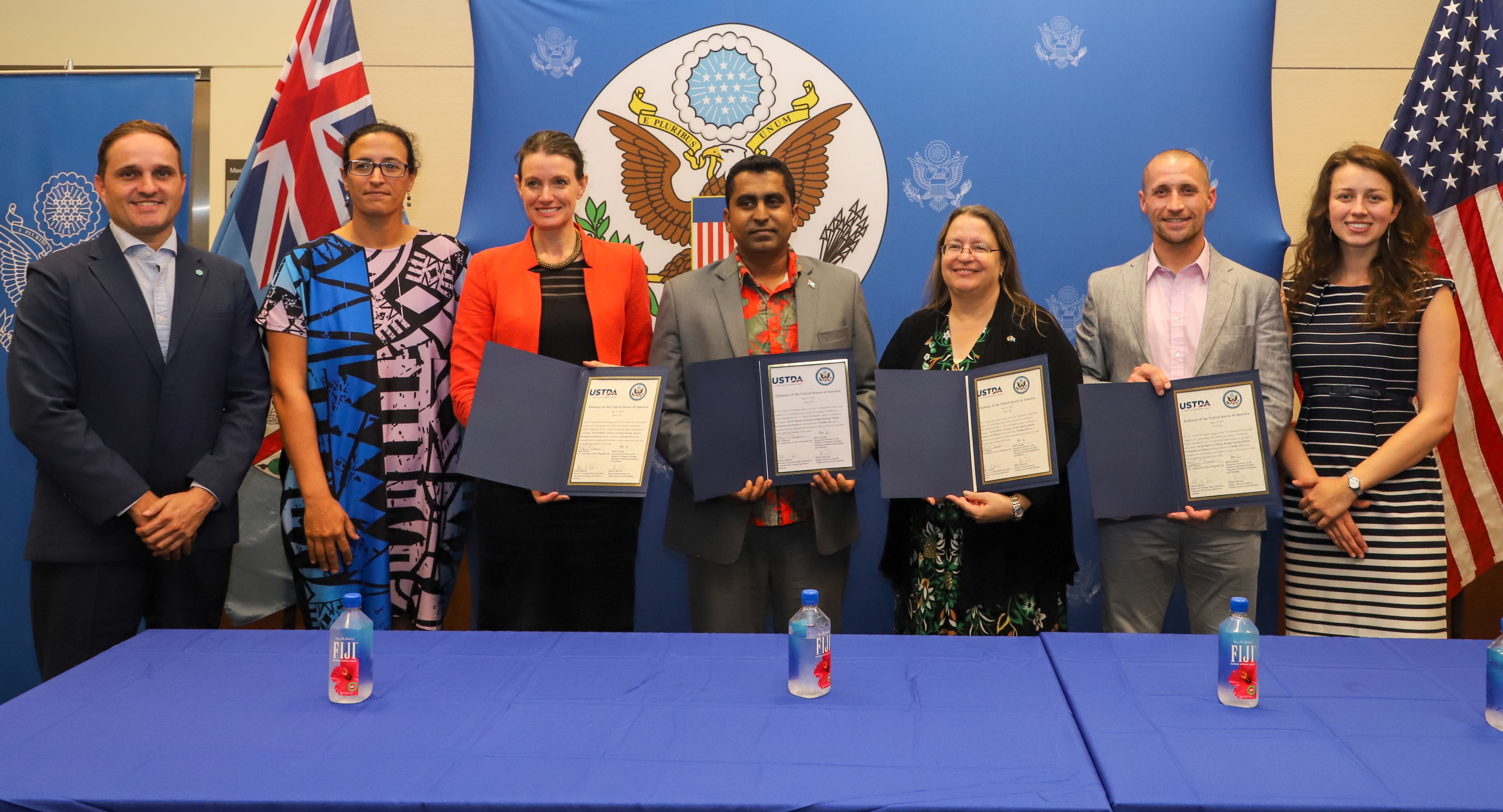Millions of people across the Pacific region lack access to electricity, and existing power provision is heavily reliant on expensive petroleum imports. Relieving these burdens to quality of life and development requires significant investment in renewable energy infrastructure and new approaches to technology design, project financing, and ownership and operation models.
Toward that end, the U.S. Trade and Development Agency (USTDA) has announced the launch of a new project in Fiji to help advance that country’s plan to provide electricity for all rural residents and to generate all power from renewable sources by 2030.
The $1.5 million initiative is called Accelerating Solar Mini-Grid Deployment in Fiji, and the initial feasibility study will be led by the Laboratory for Energy and Power Solutions (LEAPS), part of the Ira A. Fulton Schools of Engineering at Arizona State University.
For the next 18 months, that feasibility study will set up to assess 300 remote communities that lack access to reliable and affordable electricity, and then prioritize 75 sites for $40 million in capital investment for new solar-powered mini grids with energy storage capacity. These installations will displace diesel-powered generators and enhance power access and equity for Indigenous peoples.
Initial project work will include the development of technical models, geospatial site planning, sustainable business models, climate change impact assessments as well as ownership and operation options. It will also include the preparation of public tender documents for the construction, operation and maintenance of the mini grids.
LEAPS has conducted more than 100 mini grid and micro grid assessments in different countries, and the experience has demonstrated that conventional approaches to power system development may limit the electrification of communities now lacking adequate provision.
“We’ve developed innovative approaches to engineering, and even to levels of ownership and financing models, through previous work,” said Nathan Johnson, director of LEAPS, an associate professor of engineering at ASU and a senior global futures scientist. “Our methods reduce the time necessary to complete feasibility assessments and increase the accuracy of results that enable right-sizing the system and ensuring long-term sustainability.”
Johnson said their work enables identification of the best configuration and funding for each mini grid deployment. Additionally, he said the proximity of some sites should open opportunities to bundle mini grids into single procurements — or combine community mini grids with anchor clients such as cell towers, health-care services and local industry — with notable efficiency benefits.
Representatives of the U.S. Trade and Development Agency, the Global Green Growth Institute and the government of Fiji were joined by Nathan Johnson (second from right) and Elena van Hove (far right) from Arizona State University’s Laboratory for Energy and Power Solutions at a signing ceremony in Suva, Fiji, on May 17. The event marked the launch of an ASU-led solar energy project to expand access to reliable and affordable electricity among rural communities across that Pacific Island nation. Photo by U.S. Department of State
This kind of effort is complex and requires broad support. Deployed by Fiji’s Ministry of Finance, Strategic Planning, National Development and Statistics, the consortium led by ASU includes the Global Green Growth Institute, an intergovernmental organization devoted to sustainable growth, and the Xendee Corporation, a micro grid technology support business.
According to Enoh T. Ebong, director of USTDA, the partnership represents concrete action toward deepening engagement on infrastructure development within Pacific Island nations.
“Fiji has ambitious goals to connect its citizens to clean sources of power and address the impacts of climate change,” Ebong said. “USTDA is proud to partner with the (Fijian) Ministry of Finance and to bring U.S. solutions in support of their vision.”
The Fijian Ministry of Finance is also excited to see this effort move forward. Shiri Gounder, the permanent secretary of the ministry, said they are “confident that USTDA’s feasibility study, together with the consortium’s contributions, will bring successful outcomes and clean, sustainable growth.”
Project work begins immediately as Elena van Hove, the director of global energy access for LEAPS at ASU, initiates geospatial analysis of all the prospective sites followed by four months of in-person assessments for those locations prioritized for mini grid deployment.
Top photo of the Northern Yasawa Islands in Fiji by Rani Zerafa/iStock
More Science and technology

Pioneering professor of cultural evolution pens essays for leading academic journals
When Robert Boyd wrote his 1985 book “Culture and the Evolutionary Process,” cultural evolution was not considered a true scientific topic. But over the past half-century, human culture and cultural…

Lucy's lasting legacy: Donald Johanson reflects on the discovery of a lifetime
Fifty years ago, in the dusty hills of Hadar, Ethiopia, a young paleoanthropologist, Donald Johanson, discovered what would become one of the most famous fossil skeletons of our lifetime — the 3.2…

ASU and Deca Technologies selected to lead $100M SHIELD USA project to strengthen U.S. semiconductor packaging capabilities
The National Institute of Standards and Technology — part of the U.S. Department of Commerce — announced today that it plans to award as much as $100 million to Arizona State University and Deca…

